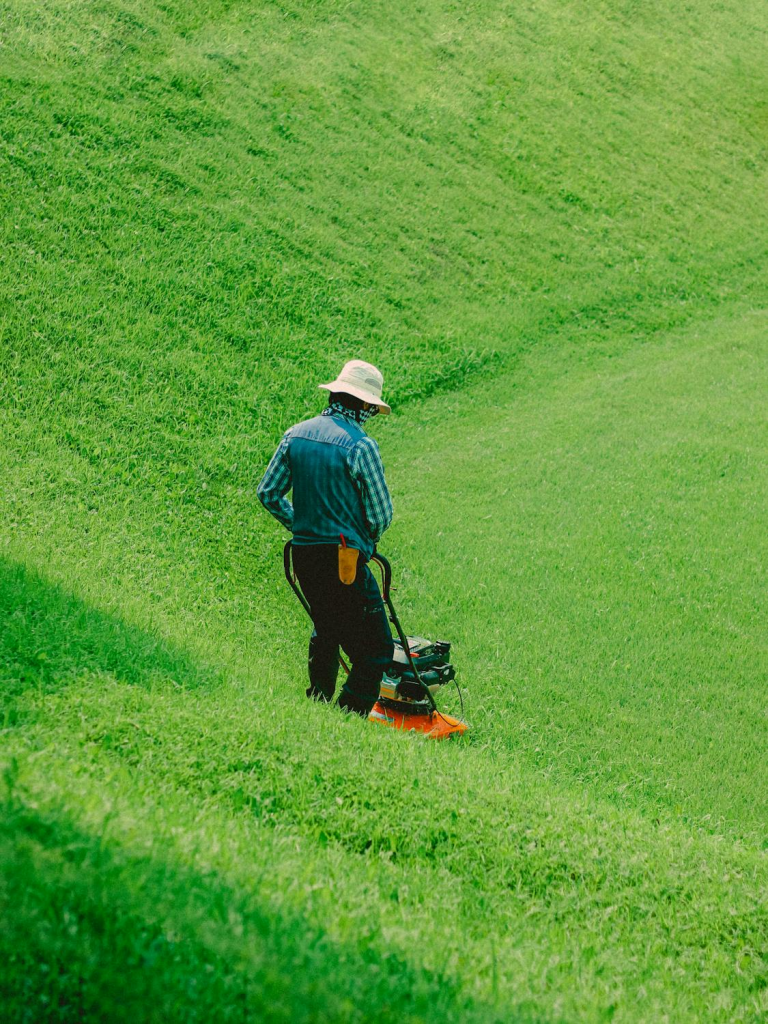A healthy, green lawn can significantly enhance the aesthetic appeal of your home. However, achieving and maintaining a lush, vibrant lawn requires effort, time, and knowledge. Many homeowners make common lawn care mistakes that can impede the growth of their lawn or cause more harm than good. Understanding these mistakes and how to avoid them is essential for maintaining a beautiful lawn.

For further reference on expert lawn care tips and techniques, be sure to visit our website.
Overwatering Your Lawn
Why Overwatering Is Harmful
One of the most common lawn care mistakes is overwatering. While water is essential for your lawn, too much of it can suffocate the grass, leading to root rot and disease. Overwatering can also promote weed growth, which competes with your grass for nutrients.
How To Avoid Overwatering
To prevent overwatering, follow these tips:
- Water deeply but infrequently.
- Early morning is the best time to water, as it allows the lawn to dry before nightfall.
- Check the moisture level of your soil with a moisture meter to ensure you’re not overwatering.
Mowing Too Short
The Risks Of Mowing Too Short
Another frequent mistake is mowing the lawn too short. Cutting your grass too short can lead to stress, making it vulnerable to disease, pests, and drought. Grass blades play a vital role in photosynthesis, and cutting them too short reduces the plant’s ability to produce food.
Best Practices For Mowing
- Set your mower at the highest setting to leave grass blades a little longer.
- Avoid cutting more than a third of the grass height in one mowing session.
- Keep your mower blades sharp to prevent damaging the grass.
Ignoring Soil Health
The Importance Of Soil Health
Your lawn’s health depends on the condition of the soil. Many homeowners focus on the grass itself, neglecting the soil beneath it. Poor soil can lead to weak roots, poor water drainage, and a lack of nutrients, all of which hinder grass growth.
How To Improve Soil Health
To boost soil health:
- Test your soil to determine its pH levels and nutrient content.
- Add compost or organic matter to improve soil structure.
- Aerate the soil once a year to allow air, water, and nutrients to reach the roots.
Fertilising Too Much Or Too Little
The Dangers Of Over-Fertilising
Fertilising is necessary to nourish your lawn, but too much fertiliser can cause more harm than good. Over-fertilising leads to rapid growth, which makes the grass more susceptible to diseases and pests. Additionally, excessive fertiliser can contaminate local water supplies.
The Risks Of Under-Fertilising
On the flip side, under-fertilising deprives the grass of essential nutrients, leading to weak growth and pale, yellowing grass.
How To Fertilise Correctly
- Use a slow-release fertiliser to provide nutrients over a longer period.
- Fertilise in the spring and autumn, as these are the best times for lawn growth.
- Follow the recommended fertiliser amounts based on your lawn’s size and the type of grass.
Not Dealing With Lawn Thatch
What Is Thatch And Why Is It Problematic?
Thatch is a layer of dead grass and organic matter that accumulates on the soil surface. While a small amount of thatch is normal, excessive thatch can block water, air, and nutrients from reaching the soil, resulting in unhealthy grass.
How To Manage Thatch
- Rake or dethatch your lawn if the thatch layer exceeds 1.5 cm.
- Aerate your lawn regularly to prevent the buildup of thatch.
- Avoid overwatering, as this encourages thatch accumulation.
Failing To Reseed Or Overseed Your Lawn
Why Reseeding Is Important
Grass can wear out over time due to foot traffic, pets, and weather conditions. If your lawn has bare patches or is thinning out, it may be time to reseed or overseed. Failing to do so can result in an uneven lawn and encourage the growth of weeds.
How To Reseed Or Overseed
- Choose a grass variety suited to your climate and soil type.
- Reseed in the early spring or autumn for the best results.
- Water the area well after seeding and keep the soil consistently moist until the seeds germinate.
Not Controlling Weeds
How Weeds Impact Lawn Health
Weeds are a common problem in lawns. They compete with grass for water, nutrients, and sunlight, preventing healthy grass growth. Some weeds, such as dandelions and clover, can quickly take over an entire lawn if left unchecked.
Strategies For Weed Control
- Use a pre-emergent herbicide to prevent weeds from germinating.
- Apply weed killer on a calm day to avoid drift and damage to nearby plants.
- Pull weeds by hand or use a weed tool to remove them at the root.
Using The Wrong Grass Type For Your Region
The Significance Of Choosing The Right Grass
Different types of grass are better suited to different climates. Choosing the wrong grass type for your region can result in inadequate growth, poor colour, and increased susceptibility to pests and diseases.
How To Choose The Right Grass
- Select a grass variety that is suited to your specific climate zone. Cool-season grasses, such as fescue and bluegrass, thrive in cooler climates, while warm-season grasses like Bermuda and zoysia are ideal for hotter regions.
- Consult with local gardening experts or a lawn care professional to find the best grass for your area.
Not Properly Maintaining Lawn Equipment
Why Lawn Equipment Maintenance Matters
Your lawn care equipment, including mowers, trimmers, and aerators, must be well-maintained to ensure they operate efficiently. Neglecting maintenance can lead to poor performance, uneven cuts, and potential damage to your lawn.
Lawn Equipment Maintenance Tips
- Clean and sharpen mower blades regularly to ensure smooth, clean cuts.
- Change the oil in your mower and other equipment as recommended by the manufacturer.
- Store equipment properly in a dry place to prevent rust and deterioration.
Forgetting About Lawn Edging
The Role Of Lawn Edging
Lawn edging helps create a neat and well-defined boundary between your lawn and other landscaping elements, such as flower beds, walkways, and driveways. Without proper edging, your lawn can appear unkempt, and grass can encroach on other areas.
How To Edge Your Lawn
- Use a shovel or edging tool to create clean, straight lines along the edges of your lawn.
- Keep the edges tidy by trimming grass regularly with a weed trimmer or manual edger.
Conclusion
Achieving a beautiful lawn requires more than just basic watering and mowing. Avoiding common lawn care mistakes is essential for maintaining a healthy, vibrant lawn. Be sure to water correctly, mow at the right height, address soil health, and take care of your lawn equipment.
By staying on top of these lawn care practices and avoiding these mistakes, you’ll be able to enjoy a lush, green lawn throughout the year.
Frequently Asked Questions
How Often Should I Water My Lawn?
Watering your lawn should be done deeply but infrequently to encourage deep root growth. Generally, it’s best to water your lawn once or twice a week, depending on the weather conditions and the type of grass. Early morning is the ideal time to water, as it allows the grass to dry before nightfall and reduces the risk of disease.
What Is The Best Time To Fertilise My Lawn?
The best time to fertilise your lawn is in the spring and autumn when the grass is actively growing. Spring fertilisation helps the grass green up and recover from winter dormancy, while autumn fertilisation strengthens the grass for the colder months. Always follow the recommended application rates to avoid over-fertilising.
How Can I Control Weeds Without Harming My Grass?
To control weeds effectively, use a pre-emergent herbicide in early spring to prevent weed seeds from germinating. For existing weeds, spot treat them with a selective herbicide that targets weeds without harming your lawn. Hand-pulling weeds is also an effective, chemical-free method if done regularly.
